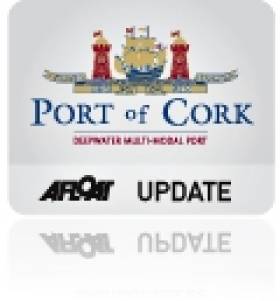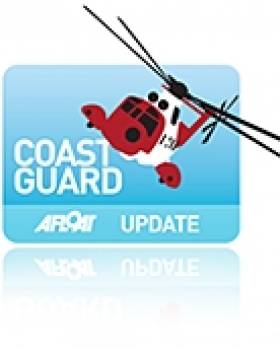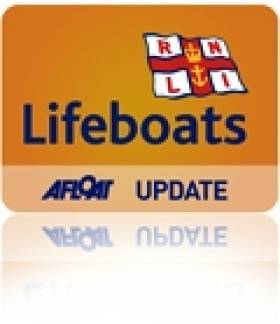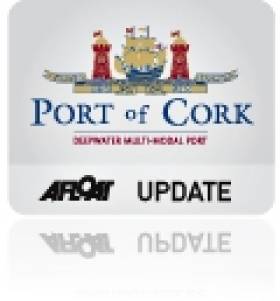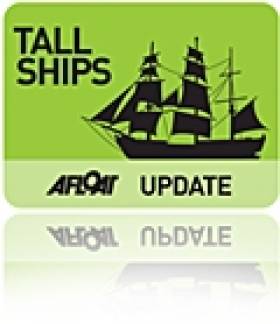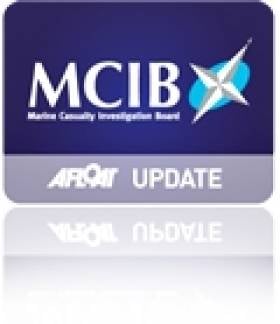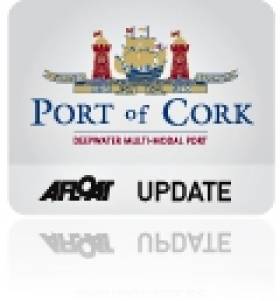Displaying items by tag: Cork Harbour
Port of Cork & Port Miami Sign 'Sister Seaport Alliance'
#portofcork – Ahead of the busy 2013 cruise season, the Port of Cork today announced details of their sister seaport agreement with PortMiami, the "Cruise Capital of the World". The sister seaport agreement will benefit the Port of Cork and PortMiami in collaborating on the exchange of information and ideas, with the intended aim of increasing both cargo and cruise trade between ports.
The Port of Cork can learn a lot from PortMiami, particularly on increasing the number of cruise calls to Cork. On average Port Miami welcomes 4million cruise passengers annually and has seven cruise terminals, while this year the Port of Cork will welcome 60 cruise liners carrying in excess of 100,000 passengers and crew to the region.
Over the last 10 years, the Port of Cork has invested €8 million in upgrading and improving cruise facilities and this has made a major impact on the number of calls, increasing from 35 in 2005 to 60 this year. The Port of Cork has high aims to grow the number of cruise calls to 80 over the next five years and to increase turn-around calls and overnight stays. Learning from PortMiami and sharing knowledge and industry information will assist the Port of Cork in achieving these goals.
The cruise business in Cork is very important for the local economy and increasing calls and overnight stays will help to generate further revenue for the region.
Other benefits of signing a Sister Seaport agreement for both ports are;
• Commitment to a free and uninhibited exchange of information regarding the cargo and cruise industries in each port, and general marketing research aimed at increasing cruise and cargo traffic between ports.
• Forming groups that exchange security information with the aim of strengthening the safety of ports worldwide
• Assisting in the implementation of educational programs that will help foster goodwill between ports
• Global promotion of both the sister seaport relationship and the advantages of doing business with the sister seaports
While the Port of Cork looks forward to a busy cruise season in 2013, Captain Michael McCarthy Port of Cork Commercial Manager says the sister seaport agreement with Port Miami means a lot for the Port and indeed Cork.
"We attended the largest ever cruise exhibition, Seatrade Miami earlier this year and we were delighted to sign the sister seaport agreement with PortMiami. The benefit of this mutual agreement means we can benchmark our cruise business with PortMiami who have extensive experience in operating cruise terminals. PortMiami is the "Cruise Capital of the World" and they operate very successful turnaround calls for most of the large cruise lines and this is something the Port of Cork hopes to learn from in the future."
Captain McCarthy continued: "In 2012 the Port of Cork had three successful turnaround calls from Royal Caribbean Cruise Line and MSC Cruises and we are aiming to extend this sector of the cruise business."
All cruise vessels that call to Cork are given a very special welcome courtesy of CorkCruise, providing tourist representatives who go on board each vessel, a display of traditional Irish dancing for passengers and a fond farewell on the quayside with a performance by a local brass band. These efforts do not go unnoticed by the passengers and the cruise lines and in 2011 the Port of Cork was awarded two Cruise Insight Awards for 'Best Shore Side Welcome' and 'Best Tour Guides'.
Minister to Open New Coast Guard Building in Crosshaven
Minister for Agriculture, Food and the Marine Simon Coveney TD will officiate at the opening of a new Coast Guard building tomorrow afternoon in Crosshaven.
The purpose built facility will serve as a Base for Crosshaven Volunteer Coast Guard Unit, as well as a Coast Guard Regional HQ and Training centre. The building can also serve as an emergency management co-ordination centre for use by other statutory services.
Minister Coveney will also present long service medals to Coast Guard volunteers drawn from local Coast Guard Units.
After the ceremony a Coast Guard helicopter will land in the vicinity of the station affording members of the public an opportunity to view the helicopter and meet the crew.
Visiting NATO Naval Flotilla Gather in Cork's City Quays
#NATOnavalVisitors – A flotilla of naval vessels from NATO's Standing Mine Countermeasures Force are on a visit to Cork this bank holiday weekend following a fortnight of exercises, writes Jehan Ashmore.
More than 300 sailors from the following European navies; Belgium, Germany, Netherlands, Norway and Poland have docked along the city's central quays. They arrived into Cork Harbour on Thursday under the escort of the Naval Service's OPV L.E. Aisling (P23) which too had tied-up on the city quays.
The naval flotilla will be open to the public between (2-5pm) on Sunday and Monday.
Since the start of this year, the force group six-strong mine-clearance flotilla, have carried out operations throughout the Baltic, North Sea and the Low Countries.
Next Tuesday, the flotilla are heading to UK waters followed by Faroese Islands and Iceland and in the north Atlantic, an area where the NATO force task group were first deployed having been formed in 1973.
The current operations are not just to make shipping safe from recovering explosives devices dating from the last two world wars but are also to combat international terrorism threats from the sea.
Among the eclectic looking naval ships is the Norwegian Navy's HNOMS HINNOEY (M343) -scroll down the page.This mine-clearance catamaran craft and her fleetmates (see list below) are berthed along the north and south quays close to the Port of Cork Company headquarters.
BNS BELLIS (M916) –Belgium Navy
HNLMS URK (M861) -Royal Netherlands Navy
FGS WEILHEIM (M1059) –German Navy
ORP CZERNICKI (511) – Polish Navy (noting NATO symbol on funnel)
ORP CZAJKA (624) –Polish Navy
HNOMS HINNOEY (M343) – Norwegian Navy
NATO which stands for the North Atlantic Treaty Organization is an alliance of countries from Europe and North America.
The organization provides a unique link between these two continents for consultation and cooperation in the field of defence and security, and the conduct of multinational crisis-management operations.
#rnli – Recently retired Port of Cork Harbour Master, Captain Pat Farnan was thanked by Crosshaven RNLI at a special presentation at the lifeboat station on Wednesday night.
Operations Manager, Alan Barton thanked Pat, who retired from the company after 33 years, for his help and support of the RNLI in Crosshaven since the station's inception in 2000.
Port of Cork Appoints New Chairman, John Mullins
#portofcork – Cork businessman John Mullins has been formally appointed as Chairman of the Port of Cork by the Minister of Transport, Tourism and Sport, Leo Varadkar, T.D. today (1 March 2013) and will commence a five year term immediately.
Mullins was most recently Chief Executive of Bord Gáis Eireann, a role which he held for 5 years until he resigned in December 2012 to set up his own consultancy and to pursue other business interests.
Commenting on his appointment, John Mullins said "I am honoured with the trust placed in me by Minister Varadkar. I look forward to my new role as Chairman of the Port of Cork, particularly at
this crucial period for the company as it advances proposals for new infrastructure required to service business for the next twenty years. I strongly believe that the Port of Cork is central to a brighter economic future for the Munster region and the Irish economy as a whole, given the value it brings in moving goods to market for both customers and businesses. As one of Ireland's core ports, I will work to ensure that the Port of Cork continues to grow and improve competitiveness."
Brendan Keating, Chief Executive of the Port of Cork said "John brings extensive experience to his role as Chairman and we are confident that he will provide excellent leadership for the port in the coming years. He will provide valuable assistance with the growth of the business and the development of port facilities as we consolidate our position as the premier port in the South of Ireland".
John Mullins takes over as Port of Cork Chairman from Dermot O'Mahoney, whose term ended in September 2012.
HMS Bounty: The Tall Ship That Should Never Have Sailed?
#TallShips - What was the HMS Bounty doing in the middle of Hurricane Sandy? It's a question that Kathryn Miles - author of a book on the history of the Jeanie Johnston - attempts to answer for Outside magazine.
As reported last October on Afloat.ie, the tall ship replica of the 18th-century square-rigged vessel - and a previous visitor to Irish shores - was sunk in the Atlantic some 100 miles off Cape Fear, forcing its crew into liferafts.
The ship's captain Robin Walbridge went missing in the incident and is presumed dead.
According to Outside, the ship has has a tumultuous history since its construction for the 1960 Hollywood film Mutiny On The Bounty starring Marlon Brando - weathering life as a seaside attraction at a Florida resort town, and as an extra in two of the Pirates of the Caribbean movies.
Since 1995 it was skippered by Walbridge, who "worked tirelessly to preserve the vessel" and took her as far and wide as the Great Lakes, the Panama Canal and Europe - including visits to Cork Harbour in 2009 and Belfast Lough in 2011, reflecting the original vessel's Irish connections (Captain William Bligh designed the North Bull Wall and surveyed Dublin Bay some years after the infamous mutiny).
But preservation requires funding, and it's that struggle for funding that may have encouraged the captain to push the limits of his vessel and its crew.
Outside has much more on the story HERE.
No Host Port for Ireland in 2013 Figaro
#Figaro - The course for this year's Solitaire du Figaro has been finalised - with no Irish port in the lineup.
The Daily Sail details the four legs of the 44th edition of the prestigious and challenging single-handed offshore race, that will take the fleet from Bordeaux to Porto, Gijón, Roscoff and Dieppe - with no changes from the course unveiled in December.
But despite indications that Ireland would have a host port on the race route, following previous stop-overs on Kinsale, Dingle, Howth, Crosshaven and Dun Laoghaire, it appears this summer's running will be a purely continental event.
Even so, Ireland will be represented among the competing fleet by the brother of last year's Sailor of the Year David Kenefick, who is set to make his Figaro debut.
The Cork Harbour helmsman, who came second in the La Grande Motte recently, discussed race tactics as he steps up his training ahead of the race from 2-23 June.
Man Lost Arm After Going Overboard from RIB In Cork Harbour
#MCIB - A man who lost his arm when he fell overboard from his boat in Cork Harbour last summer could have avoided the accident if he had followed essential safety precautions, according to the official report into the incident. The full report is available to download below as a PDF document.
Owen Corkery of Carrigaline was the subject of a 'miracle rescue' on 9 June 2012 when he was thrown overboard from his RIB, which subsequently struck him several times after he entered the water near Haulbowline Island, causing serious injuries to his head, back and left arm.
As previously reported on Afloat.ie, the RNLI said Corkery was "incredibly lucky to have been spotted from the shore" by a man now known to be Paul Bryans, who had been looking through a telescope at Fort Camden in Crosshaven approximately a mile away from the site of the incident.
Bryans and colleague Dick Gibson immediately raised the alarm with the emergency services and Crosshaven RNLI respectively, and rescue crews were dispatched within minutes.
While the lifeboat volunteers took control of the wayward RIB, Corkery was quickly retrieved from the water by the crew of the Cork Harbour Pilot boat Sonia. They found him incoherent and bleeding heavily, and also noted that while he was wearing a working personal flotation device (PFD), he was not wearing warm clothes or shoes.
Corkery was transferred via ambulance to Cork University Hospital, where his left arm was later amputated just above the elbow due to the severity of his injuries.
According to the official report into the incident by the Marine Casualty Investigation Board (MCIB), the RIB was found to be undamaged but had no CE or other approval mark.
The kill cord on the boat's motor was also found to be malfunctioning, as the engine could be started whether or not it was attached, and did not shut off when removed.
The report states that Corkery - an experienced powerboat user who had not completed any recognised handling course - has since explained he was aware of the kill cord malfunction but continued to use the vessel.
He confirmed in the same interview with investigators that he was standing beside the helm of the RIB at the time of the incident, a position that "would have made him considerably more likely to be thrown from the vessel".
Investigators also found it likely that Corkery's lack of shoes would also have reduced his grip while standing on the floor of the RIB.
In its conclusions, the MCIB report - which is available to download below - emphasises that the kill cord is an "essential part of safety equipment for all open motorboats" that should always be used and checked regularly, and that the helm of any high-speed watercraft should always remain seated, even at low speeds.
It also recommends that all pleasure craft owners should complete a recognised powerboat handling course.
Expansion On The Cards For National Maritime College
#NMCI - The National Maritime College of Ireland (NMCI) is to expand into Asia and the Middle East, as The Irish Times reports.
The Cork Harbour-based college, which provides training and education for the Merchant Marine and non-military needs of the Naval Service, is set to provide training and consultancy services in the Gulf region, Vietnam and Malaysia via its commercial wing NMCI Services.
That was the message from Dr Brendan Murphy, president of the Cork Institute of Technology (CIT) of which the NMCI is a constituent college.
Speaking at a conferring ceremony for new graduates, he added that 10 full-time research posts created at the NMCI in the past year represented a "growth in R&D" that "has warranted the establishment and branding of NMCI's own research centre, something which will take place in the very near future."
Captain Pat Farnan Retires as Port of Cork Harbour Master
#portofcork – Captain Pat Farnan is to retire as harbour master of the Port of Cork after 33 years with the company.
Captain Farnan joined the Port of Cork in 1980 as Assistant Harbour Master and since then, has built a reputation as one of the leading Harbour Masters in the country. He also served as President of the European Harbour Masters Association from 1996 to 1998.
The Harbour Master is primarily responsible for the safety of all vessels within the port and advises the Board of the Port Company on all nautical matters. In the case of the Port of Cork, he is also responsible for the management of all aspects of port operations, including pilotage, towage and crane operations.
Prior to joining the Port of Cork, Captain Farnan enjoyed a sea-going career with Irish Shipping Ltd, joining as a cadet and subsequently serving in all ranks on a wide variety of vessels, trading worldwide. He left Irish Shipping in 1980 to join the Port, having served as master for two years.
Captain Farnan has also served as Harbour Master of Bantry Bay since 2002.
Captain Farnan lives in Cobh with his wife Carmel and this year celebrates 40 years of marriage. He has two sons, Keith based in Dublin and Patrick based in Cork.
Commenting on his retirement, Captain Farnan said "It has been a privilege to have been the 12th person to hold the position of Harbour Master since 1820.
"I joined the then Harbour Commissioners in 1980 at a particularly fortuitous time as the Port was about to enter an exciting phase of its development with the construction of new facilities at Ringaskiddy. This facilitated the expansion of the Port and in the intervening years the deepwater facilities at Ringaskiddy allowed the Port to accommodate large Panamax vessels and more recently a deep sea container service. Now it is established as one of the leading Ports in the country.
"Among the many highlights for me during my time at the Port of Cork was the return of cruise liners to Cork with the berthing of the QE2 at Ringaskiddy in 1990 and the development of the cruise facilities in Cobh to meet the challenge of the ever increasing size of cruise liner culminating in the berthing of the "Independence of the Seas" and "Queen Mary 2" two of largest cruise ships. The Tall Ships visit in 1991, which was the first time the event was ever hosted in Ireland, was also a great personal highlight of my career.
"One of the major strengths of the Port is the combined efforts of every individual who make the day-to-day running of the Port possible, at all levels and the high level of morale that was maintained over the years. I was fortunate in having a great team supporting me in operations."
Deputy Harbour Master, Captain Paul O'Regan will assume responsibility as Acting Harbour Master and Captain Pat Murphy will be the Acting Deputy Harbour Master. Both will bring their many years of experience and expertise to continue the efficient operations of the Port.
Brendan Keating, Chief Executive of the Port of Cork concluded "Pat has given outstanding service to the Port of Cork and he retires today with our very best wishes."


























